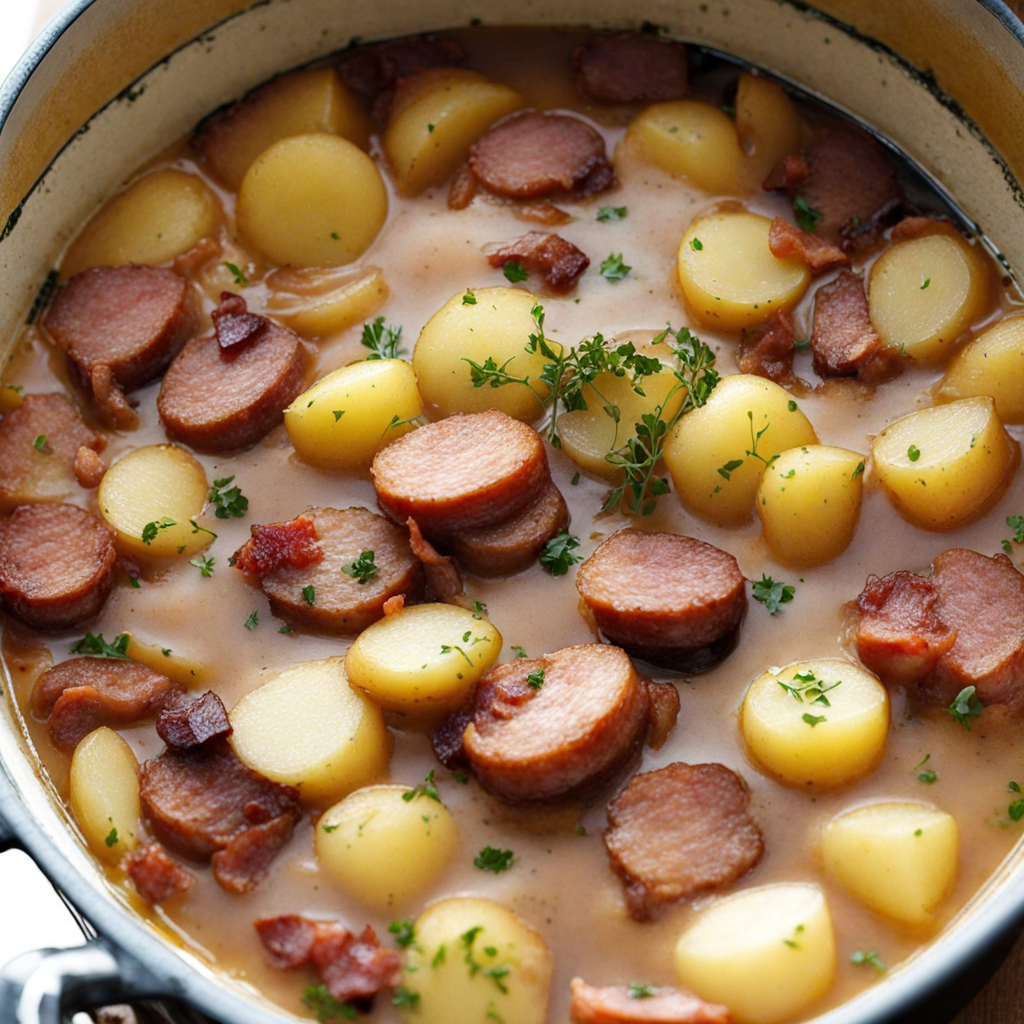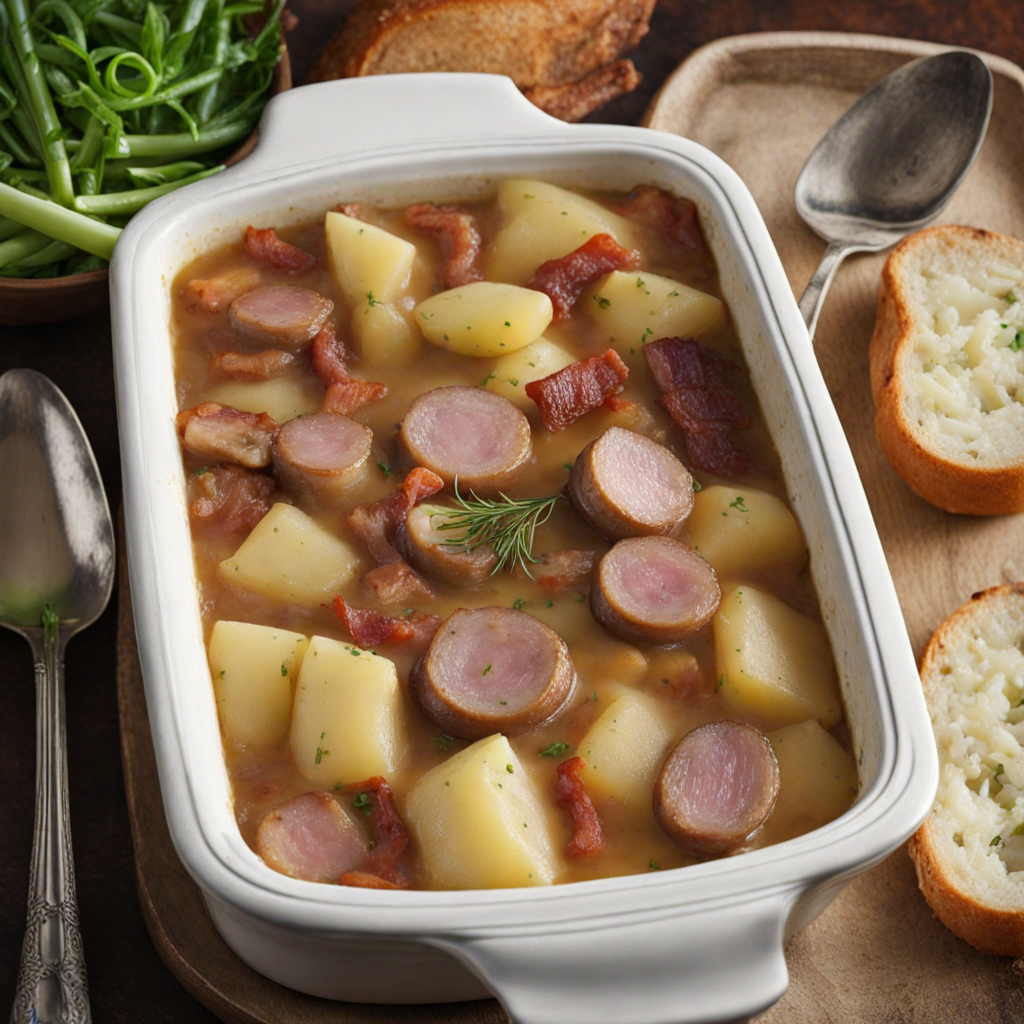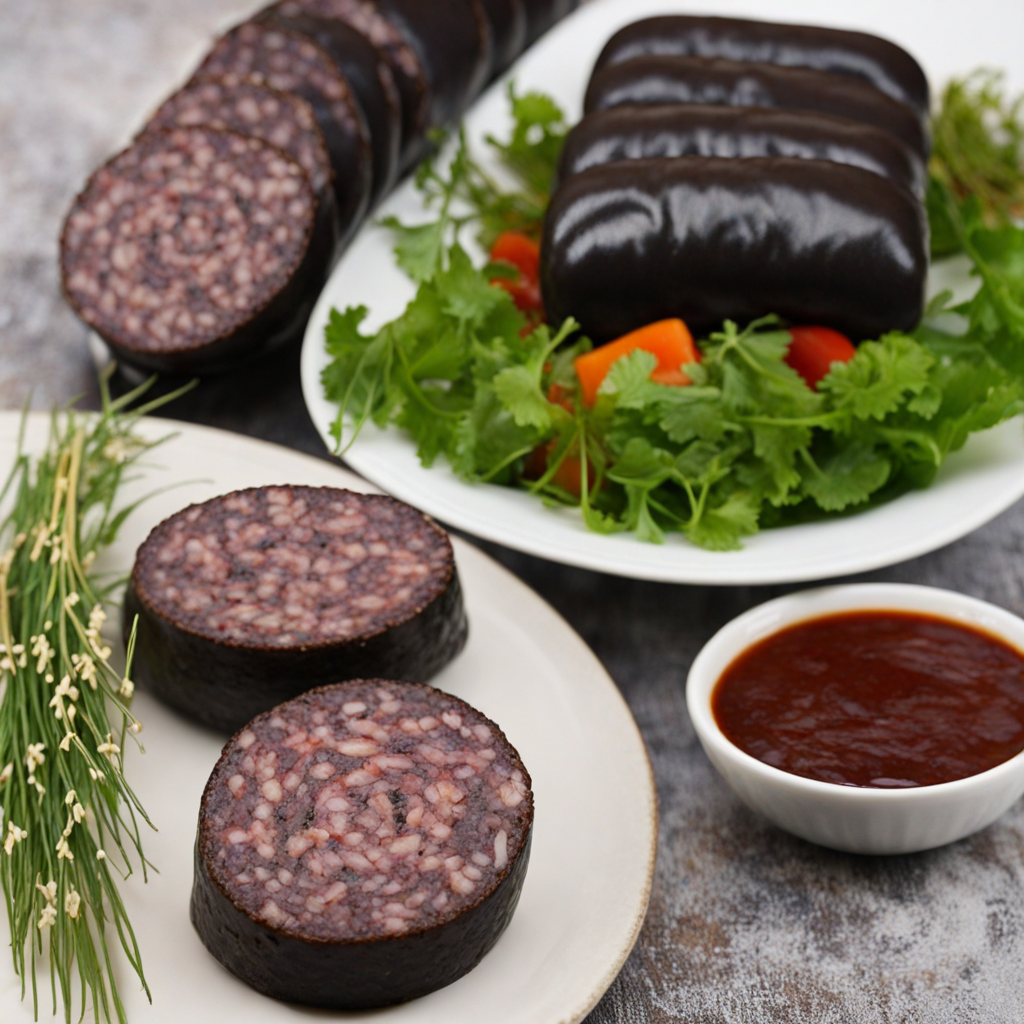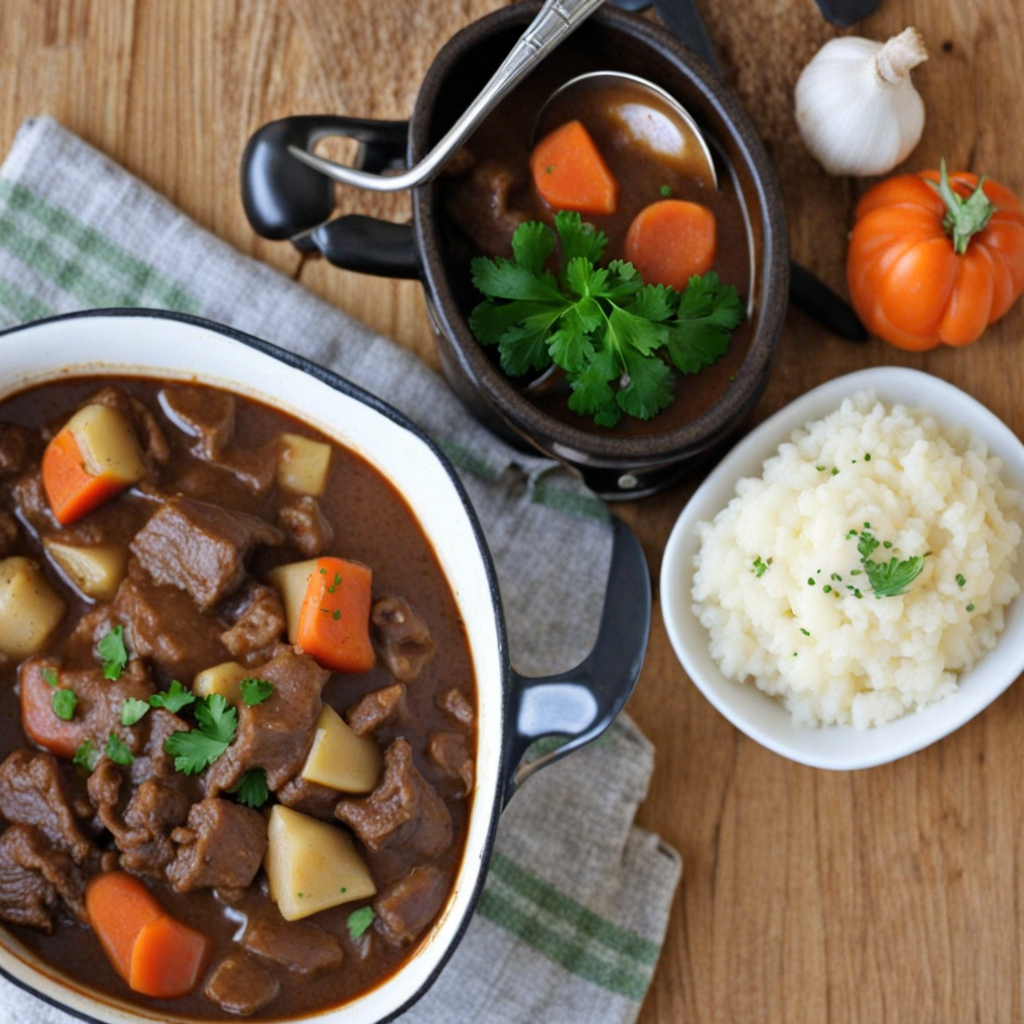Coddle
Cóidal, a traditional dish hailing from the heart of Ireland, is often seen as a culinary embodiment of the country’s rich agricultural heritage and its deep-rooted cultural practices. This rustic dish, which translates to “stew” in English, has been a staple of Irish households for centuries, reflecting the resourcefulness of the Irish people in using what was available from their land and livestock. Historically, Cóidal dates back to a time when the Irish diet relied heavily on locally sourced ingredients. The dish is believed to have evolved from ancient cooking methods where various meats and vegetables were combined in a single pot, slow-cooked over an open fire. This method not only maximized flavor but also served as a practical way to prepare meals for large families and communities. As potatoes became a staple crop in the 17th century, they were often included in Cóidal, further solidifying the dish’s place in Irish cuisine. The flavor profile of Cóidal is deeply comforting, characterized by a harmonious blend of savory and earthy notes. The long, slow cooking process allows the flavors of the ingredients to meld together, creating a rich and hearty stew. The use of fresh herbs, particularly thyme and parsley, contributes a fragrant lift to the dish, while the inclusion of root vegetables such as carrots and parsnips adds a subtle sweetness that balances the savory elements. The meat, typically lamb or beef, lends a depth of flavor that is both robust and satisfying, making Cóidal a perfect dish for cold
How It Became This Dish
Origin of Cóidal Cóidal, a traditional Irish dish, has its roots deeply embedded in Ireland's agrarian past. The name "Cóidal" is derived from the Irish word "cóid," which means "a portion" or "a piece." This name aptly reflects the dish's nature as a hearty meal that is often served in generous portions, suitable for feeding families and communities. Its origins can be traced back to the Celtic tribes of ancient Ireland, who relied on locally sourced ingredients such as grains, vegetables, and meats. The simplicity and accessibility of Cóidal made it a staple in rural households, where resources were often limited. The earliest versions of Cóidal likely consisted of a mixture of oats or barley, cooked with water or broth to create a thick porridge. As agriculture developed in Ireland, so did the dish. The introduction of potatoes in the late 16th century, following their arrival from the New World, significantly transformed Cóidal. Potatoes quickly became a staple food in Ireland, and their incorporation into Cóidal added a new layer of nutrition and flavor, making it an even more essential dish for the Irish populace. \n\n Cultural Significance Cóidal is more than just a dish; it is a symbol of Irish heritage and cultural identity. Historically, it was a communal meal, often prepared for gatherings and celebrations. Families would come together to share Cóidal, fostering a sense of community and togetherness. The dish is often associated with rural life in Ireland, where it was common for farmers and laborers to eat Cóidal as a hearty meal to sustain them through their hard-working days. The cultural significance of Cóidal is also reflected in Irish literature and folklore. It is mentioned in various texts and songs, celebrating the simplicity and heartiness of the dish. The meal embodies the spirit of resilience and resourcefulness that characterizes Irish culture. It is a reminder of the agricultural practices that have sustained the Irish people for centuries and serves as a testament to the ingenuity of using available ingredients to create nourishing food. \n\n Development Over Time As Ireland's culinary landscape evolved, so did Cóidal. During the 19th century, the Great Famine (1845-1852) had a profound impact on the dish and Irish society. The potato blight devastated crops, leading to widespread hunger and suffering. However, the resilience of the Irish people shone through, and many adapted their recipes to include whatever ingredients were available. This period saw the emergence of various regional variations of Cóidal, as families improvised with whatever grains, vegetables, or meats they could find. Post-famine, Cóidal began to evolve further, influenced by changes in agricultural practices and the introduction of new ingredients through trade and colonization. The dish became more diverse, with urban areas incorporating different spices and flavors from immigrants and travelers. The industrial revolution brought about changes in food preparation and preservation, prompting a shift in how Cóidal was made. Canned goods and preserved foods became more common, allowing for a wider array of ingredients to be used in traditional recipes. \n\n Modern Interpretations In contemporary Ireland, Cóidal has experienced a resurgence as part of the broader movement to celebrate traditional Irish cuisine. Chefs and home cooks alike are revisiting the dish, experimenting with modern twists while honoring its roots. Today, Cóidal can be found on menus across Ireland, ranging from rustic pub fare to gourmet interpretations in fine dining establishments. Modern variations of Cóidal often include a diverse array of ingredients, such as seasonal vegetables, local meats, and even international spices, reflecting the changing palate of contemporary diners. Some chefs have embraced the ethos of farm-to-table dining, sourcing ingredients from local farmers to create sustainable and environmentally friendly versions of Cóidal. This evolution not only preserves the cultural significance of the dish but also promotes a deeper connection to the land and community. \n\n Global Influence The popularity of Cóidal has not been confined to the borders of Ireland. As the Irish diaspora spread across the globe, so too did the traditional recipes. In the United States, for example, Irish immigrants brought Cóidal with them, adapting it to the ingredients available in their new homes. This led to the creation of unique variations, such as the incorporation of cornmeal or different types of meat, which reflected the regional influences of American cuisine. Today, Cóidal continues to inspire chefs and home cooks around the world, serving as a canvas for creativity while maintaining its essence as a nourishing and communal dish. Food festivals celebrating Irish heritage often feature Cóidal as a highlight, showcasing its importance in the global perception of Irish cuisine. The dish not only serves as a delicious meal but also as a cultural bridge, connecting people to their Irish ancestry and to each other through the shared experience of food. \n\n Conclusion Cóidal stands as a testament to the enduring power of food as a cultural symbol. Its journey from humble origins to contemporary interpretations highlights the adaptability and resilience of the Irish people. As more individuals seek to reconnect with traditional foods and their histories, Cóidal remains a beloved dish that encapsulates the spirit of Ireland. Whether enjoyed in a cozy pub in Dublin or prepared at home with family, Cóidal continues to nourish both the body and the soul, reminding us of the rich tapestry of flavors, stories, and traditions that make up Irish cuisine.
You may like
Discover local flavors from Ireland







